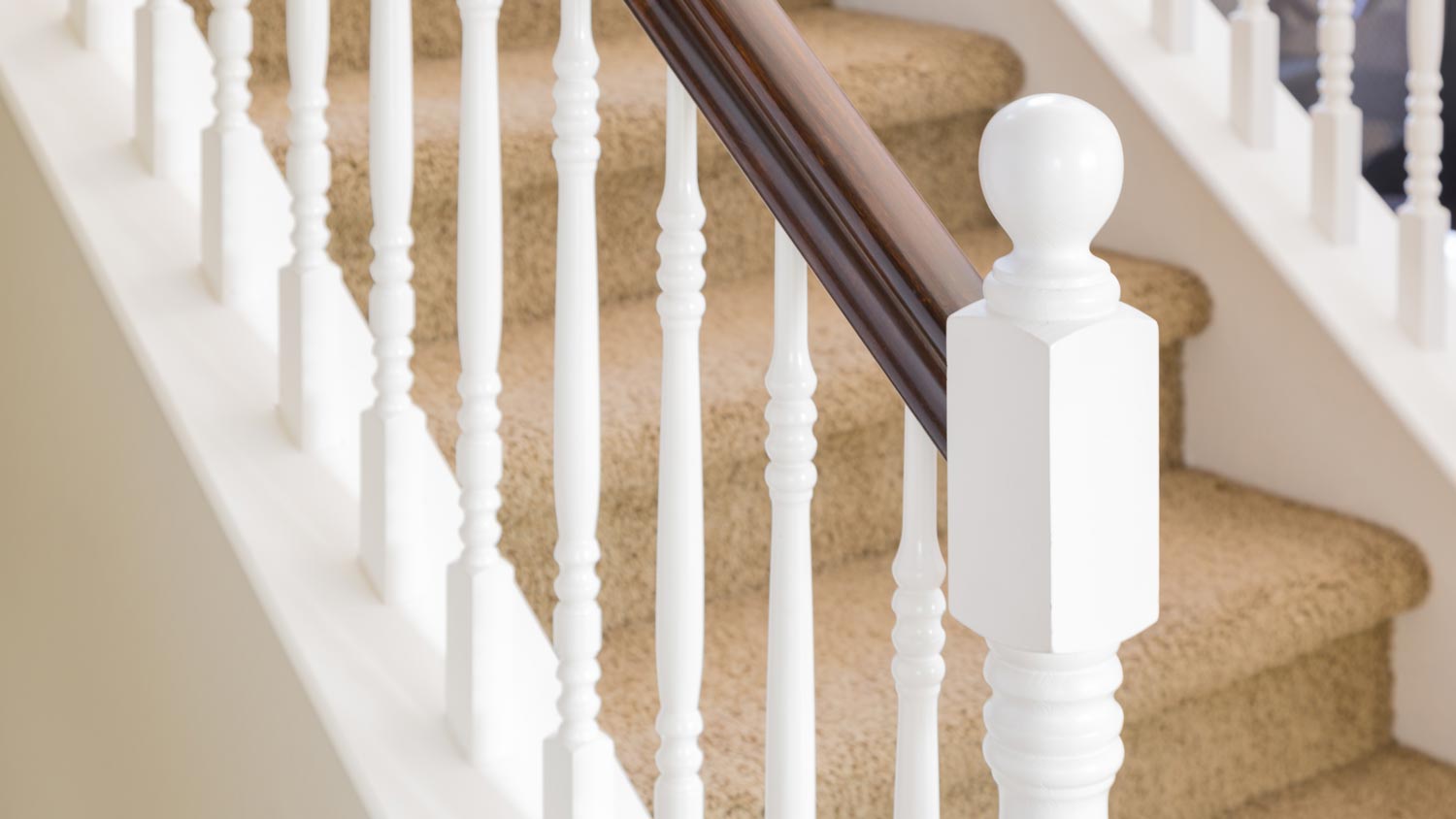
Get expert insights on stair railing repair cost, including average prices, cost factors, and tips to save money. Plan your stair railing repair project with confidence.
Accurate measuring reduces cost and frustration


Learning how to measure baseboard trim accurately is partially a lesson in taking measurements and partially about visualization when it's time to make cuts with your saw. Precise measuring will increase installation speed and can save on material costs. This guide walks you through several measuring techniques, depending on which part of the baseboard you're working on.

Before beginning your installation, baseboard repairs, or replacement, you'll need materials. Measure the wall lengths in each room you'll work in, subtracting for door openings and any places where you won't install the material. Add 10% to your total to account for waste. These can be relatively rough measurements, but the more accurate, the better.
When it's time to make precise measurements for cutting, it's essential to know that the loose end on your tape measure is your friend. The looseness accounts for the width of the hook. Test your tape accuracy by taking two measurements. First, pull the tape from the end of a scrap piece of wood and mark your spot. For the second, hold the same wood piece against a flush surface and push the tape into the surface instead of pulling it from the end of the wood. Your mark should land in the same spot.
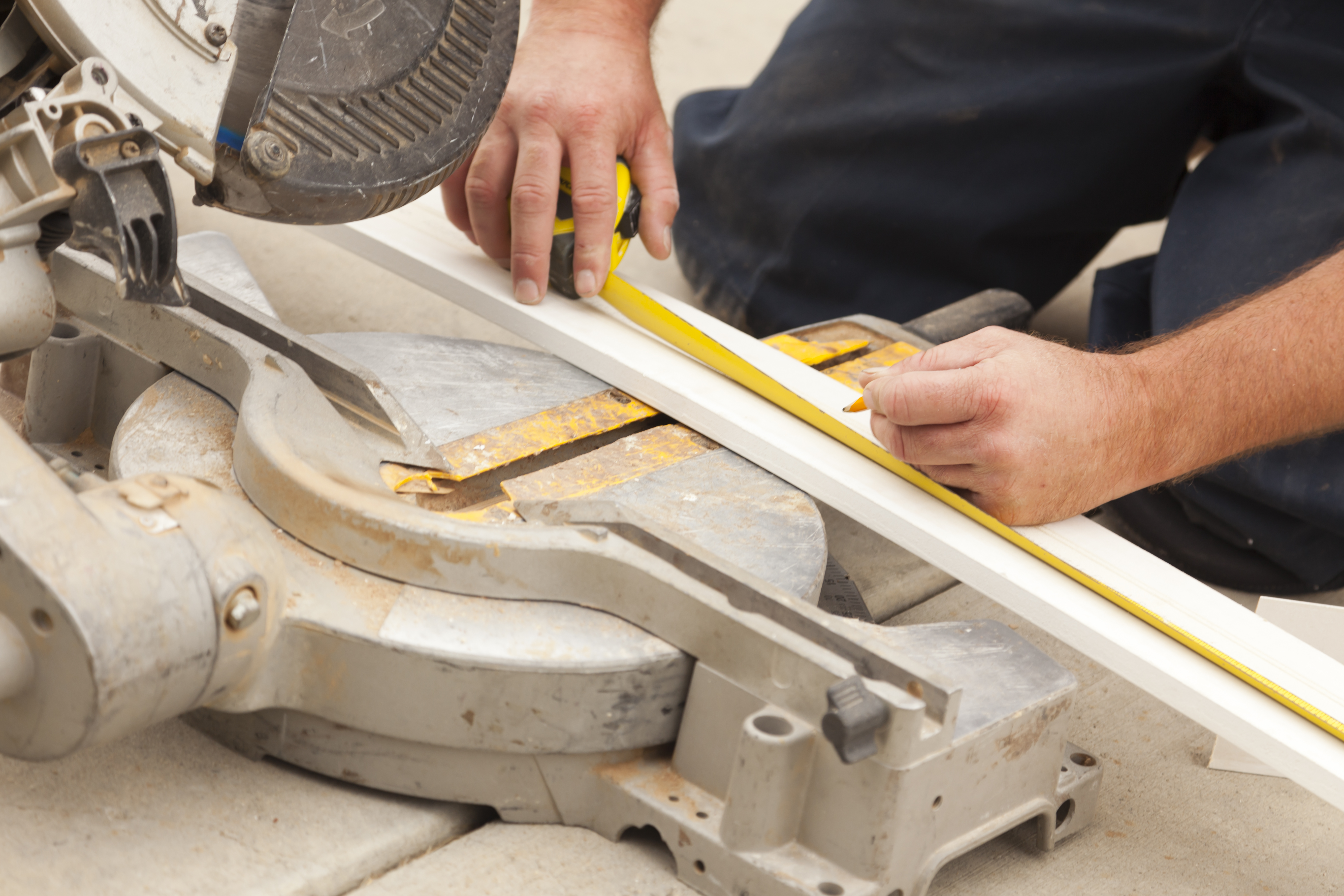
An essential part of measuring accurately and making perfect cuts is visualization. When marking your baseboard for cuts, picture which side of your marks to cut on with your saw. You'll almost never cut directly on your line, as the kerf, or width, of the saw blade can make a big difference in how your trim work will fit. Cut on one side or the other of your mark, depending on how you measured for the piece.
Because your tape measure is flexible, push the hook into the end wall when measuring for longer baseboard pieces. Additionally, because your material is also flexible, especially vinyl baseboards and similar types, place it on a hard surface or a scrap length of lumber to keep it straight and rigid when transferring your measurement to the trim piece. For runs longer than the length of your baseboard, account for a splice angle of 22.5, 30, or 45 degrees in your measurements.
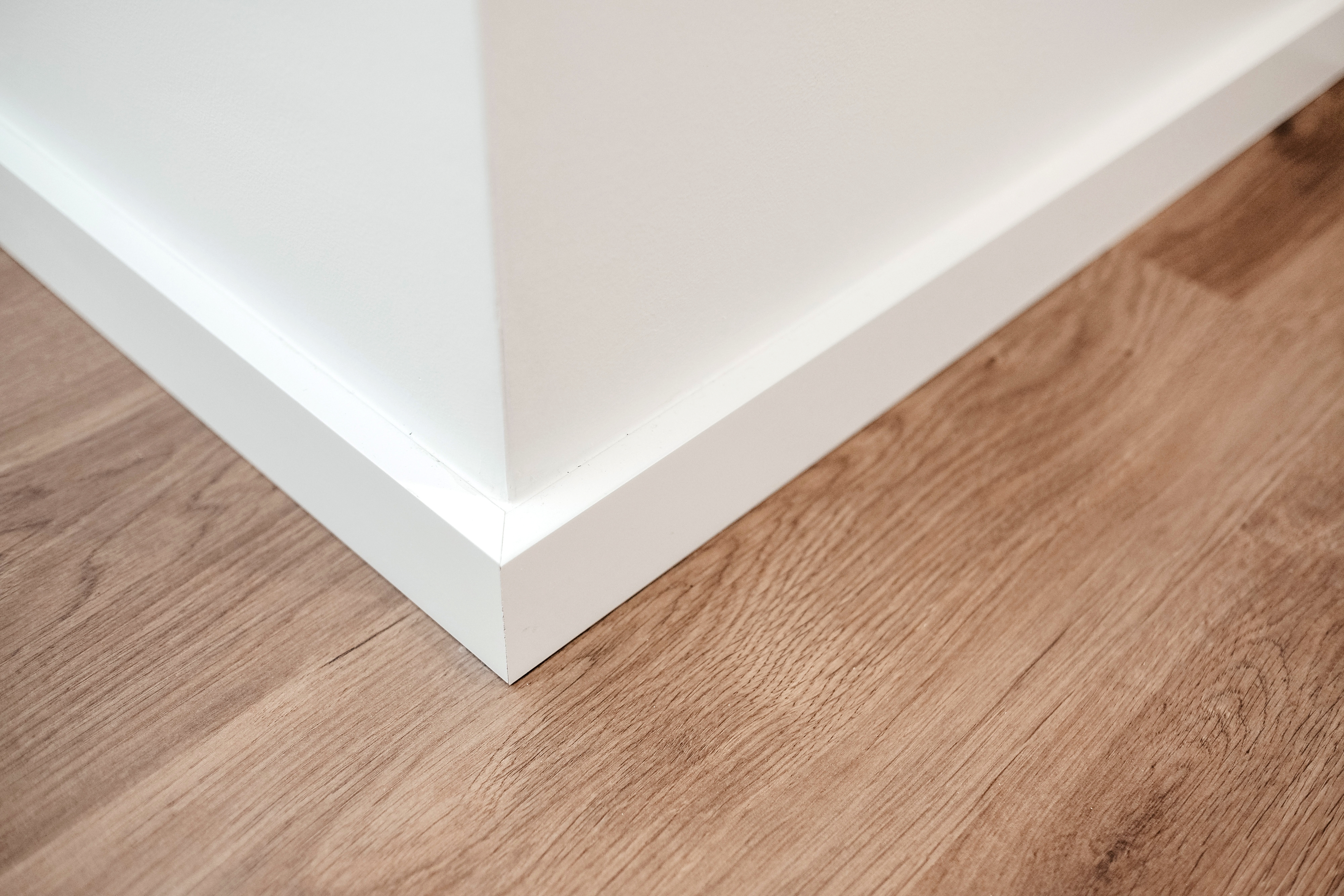
The best way to measure for outside corners is to set the actual piece of trim you're installing in its location and mark the back of it where it meets the corner. You won't even need your tape measure. Use your speed square to extend the mark to the trim's edge. Make your 45-degree cut so the face of the baseboard is the long side.
If directly using the trim piece isn't possible, take your measurement at the wall corner and transfer it to the back of the trim piece.
There are a few tricks for measuring inside corners for baseboard trim.
If you're measuring from the end of another piece of installed baseboard, measure from the piece to the wall and then from the wall to the piece to help ensure accuracy.
If you're measuring from one inside corner to another, place your speed square against one corner and push your tape into the other corner. Measure to the end of your square and add the square's length to the total.
When transferring your marks and cutting, your 45-degree cuts will face inward toward the face of the trim.
If there's already trim in one of the corners, measure to its face and add the thickness of it to your total measurement.
For coped joint corners, use the same measuring techniques as you would for a mitered inside corner. However, leave the first piece as a butt joint against the perpendicular wall. Make a 45-degree cut toward the baseboard's face to make the coping joint cut in the second piece.

Creating returns where baseboard trim ends abruptly provides a finished look. To make one, measure to the end point of the run and mark the front of the trim piece. Your first cut will be a 45-degree angle, so the piece's front side will be the longer one. For the return piece, simply measure the widest thickness of your baseboard and use that number to mark for the opposing 45-degree cut.
If you're installing baseboard trim for the first time, allow yourself some extra time and material for mistakes. The most common mistakes are relatively simple to minimize.
Buying too little: The rule of thumb that pros use is to purchase between 5% and 10% more than they measure for. As a beginner, consider buying a couple of extra pieces, or up to 20% more than necessary, to save yourself a trip back to the store.
Cutting too short: Cutting on the wrong side of your mark or imprecise measuring are the most common reasons for cutting too short. Measure twice, cut once is a good guideline. However, with trimwork, there's no shame in intentionally cutting long and creeping up on the correct measurement with subsequent cuts.
Measuring and accurately cutting baseboard trim is pretty straightforward. However, things like unlevel floors, obstructions, and tight spaces can make the task challenging, or at least tedious. For first-timers, the job can get frustrating.
Carpenters, handypersons, trim installation specialists, or trim carpenters can all install baseboards at an expert level. Installing baseboard is a popular task for avid DIYers who can save up to 50% of the job cost by doing it themselves. However, it comes at the cost of giving up a weekend of free time.
Most homeowners hire the job out to a local baseboard installation company to save time and ensure an attractive finish.
From average costs to expert advice, get all the answers you need to get your job done.

Get expert insights on stair railing repair cost, including average prices, cost factors, and tips to save money. Plan your stair railing repair project with confidence.
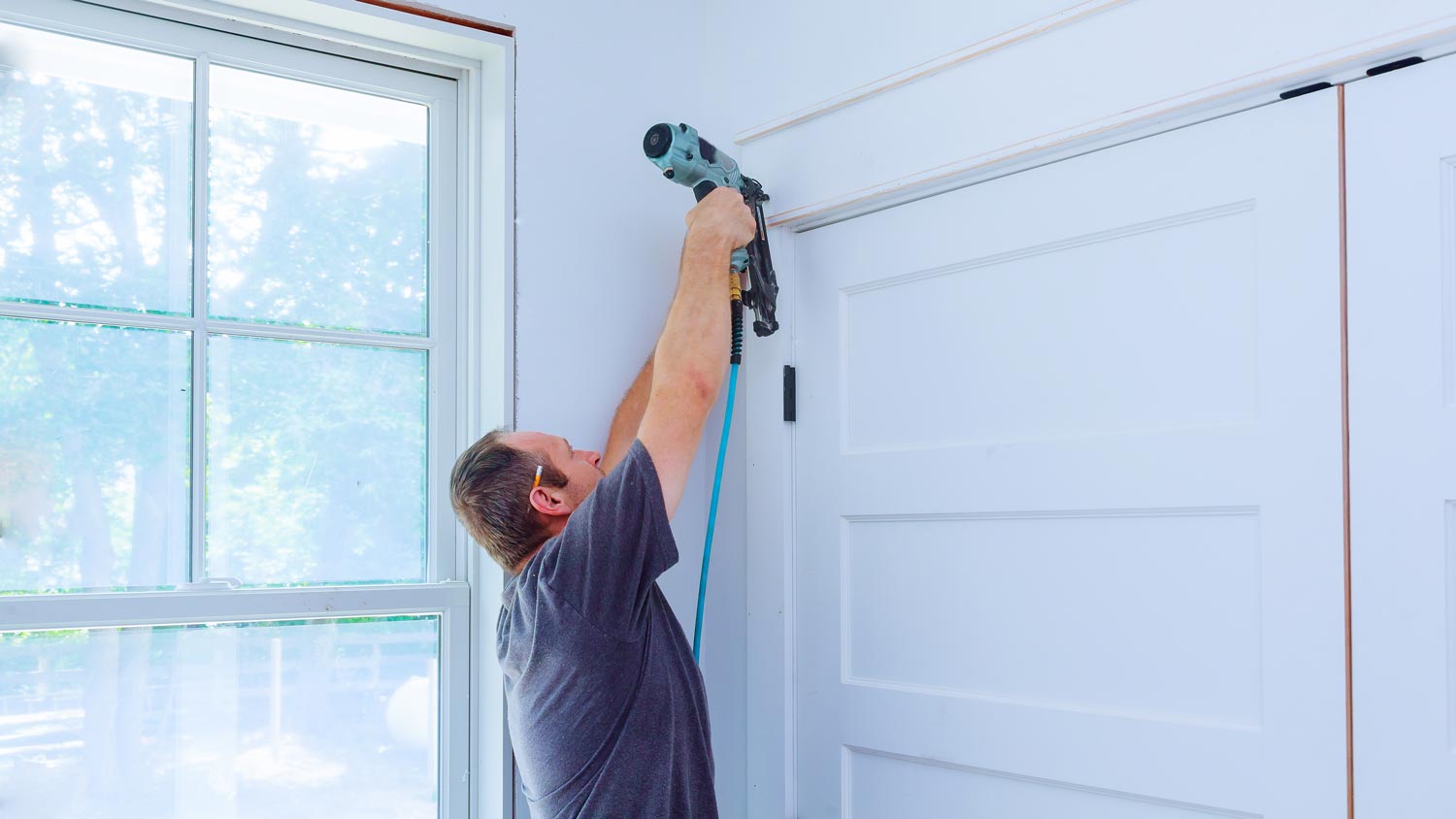
Discover the cost of widening a doorway, including average prices, key cost factors, and tips to help you budget for your project.

The cost to install wainscoting depends on labor, materials, and square footage. This guide will help you budget for your next project.
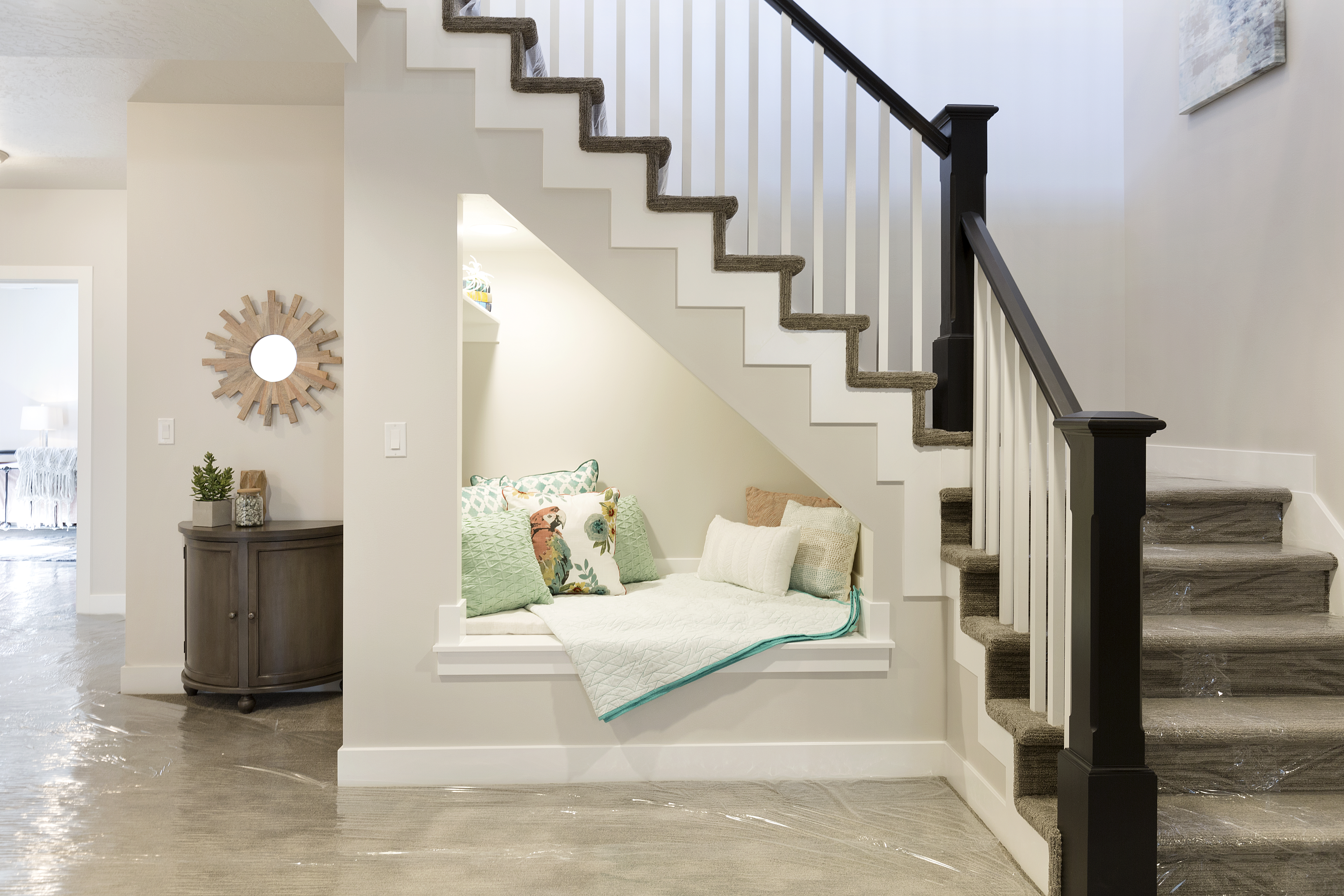
While there is a standard staircase size, you have a lot of leeway to size for comfort or space constraints. Learn about average sizes and minimums.

Crown molding sizes aren’t standardized. In fact, the right size for your space depends on the ceiling height, room size, and your home’s style.

While both can perform most carpentry work required for house projects, the major difference between a journeyperson vs. a master carpenter is their years of experience.